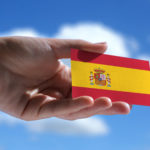Spain has a reputation for hosting some of the most extravagant, bizarre and creative festivals across the course of the whole year. We can’t begin to detail every one of the opportunities for joining in with Spanish festivities, but the good news is that nearly every month you’ll find something to celebrate.
From Coruña to Cadiz, Spain is littered with the spirit of fiesta. The pleasure of the procession, the opportunity to ‘disfrazarse’ (dress up), the tradition and splendour, it’s difficult for any foreigner to be unaware that Spanish festivities are an important part of life here.
Each region and municipality has its very own selection and some of these will be unique to your particular town. However, there are some that can be found almost everywhere and in this article we give you a monthly countdown.
Three Kings (January)
Christmas lasts a long time in Spain. When the traditional Spanish festivities of 24th and 25th December are over it isn’t time to take down your tree. Quite the opposite. It continues to be Christmas until 6th January which is traditionally a holiday across Spain. On the 5th January the Three Kings or Los Reyes Magos, arrive in each town and city of Spain to deliver their presents to the children there.
It’s a very special procession that mixes the excitement of eagerly awaited presents with the religious message of Christmas. Usually there is opportunity for the town’s children to have their wishes collected before the Kings arrive and it’s a delight to watch them staring at the floats, looking for their favourite King.
Carnival (February)
February may not be the best month weather-wise in Spain but it certainly brings with it some colourful parades. Many towns and cities celebrate this traditional period before lent with a carnival or ‘carnaval’ in Spanish.
The celebrations usually continue over a period of a couple of weeks and include the announcing of the carnival kings and queens, shows and performances and, of course, the carnival procession which is the focus of this winter pick-me-up of Spanish festivities.
Comparsas (dance groups) prepare for many months to amaze you with their themed displays that often involve feathers, sequins and as much dazzle as can be mustered in a blustery February. It’s an expensive and extravagant affair and prizes are often awarded to those groups judged to be the most creative and the best dressed. Find your vantage point early to get a good view and at the biggest venues set aside three to four hours at least.
Semana Santa (March/ April)
In many respects, Semana Santa (Holy Week) is the biggest celebration in the calendar of Spanish festivities. Each day there is a different procession that acknowledges part of the easter story. Brotherhoods or cofradías, are responsible for carrying huge statues on floats or ‘pasos’, some of which can weigh 1,500 kilos or more. It’s considered to be a huge responsibility for those taking part and is a markedly solemn occasion.
Some of the processions are more attractive for spectators than others and you should check carefully the days and which one is scheduled in order to pick one that will engage the family. Other events will also be organized across the week and, of course, church services feature too.
Feria de Caballo (Horse Fair) (April/ May)
You won’t find this in every Spanish town but in Andalucia particularly this is one of the chief Spanish festivities to be celebrated. Usually taking place in May, it’s a lush event with plenty of flamenco and traditional Spanish dishes served up in the large tents that are erected specially for it. As you would expect from a horse fair, there are plenty of horses, elegantly dressed along with their riders. It’s a different type of parade but one that the children in particular should enjoy.
San Juan (June 23rd)
You really know when summer has arrived with the celebration of Saint John’s Eve or ‘San Juan’. Beach bonfires and fireworks herald the start of the summer as young people celebrate ‘school’s out’ and everyone enjoys the opportunity to put the past behind them and look positively to the future.
Moors and Christians (July/ August)
Dotted throughout Spain you can find evidence of the conflicts between the Moors and Christians. It’s there in the structure of the buildings, the organization of the streets and in the routines, rituals and traditions of each town. Over the summer months many towns and cities have some kind of memorial to this age-old clash of cultures and religions. It is a friendly rivalry now as people recognize the huge contribution that the Moors made to Spain and its history.
These Spanish festivities usually last at least a week and include a buildup of processions followed by food and dancing that continue well into the early hours. The very late events are usually populated by the young of the town but late evening will see many families out on the streets making the most of a whole host of activities and enjoying the relative cool of a summer evening in Spain. In some towns you can find a reenactment of some of the chief battles or incidents between the two groups.
El Dia de la Hispanidad (October 12th)
This is Spain’s national day and, as you would expect, it is a public holiday. Towns and cities across the country celebrate through a range of military processions, flag flying and shows of national pride. The extent of the celebrations depends to some extent on the political leaning of the town council where you reside.
However, either way, it is a national holiday when the weather is usually very pleasant and families can enjoy a day away from school and work. Afterall, what are Spanish festivities for but to take time off, enjoy the company and celebrate.
Todos los Santos (November 1st)
All Saints Day is a public holiday when the deceased are commemorated. It is traditional for Spanish families to visit the resting places of those they’ve lost. Although it’s a solemn time it’s also a recognition of keeping the memory of loved ones alive and celebrating their lives and achievements.
Fiestas Patronales
Over the course of the year each town celebrates its own ‘fiestas patronales’ which depends upon who the patron saint of the town is. During this week there will be a variety of organized events some of which may leave you a little baffled but have their roots in the traditions and history of the town. Be aware that during this week there may be odd days when shops are closed and it is clear that it’s everyone’s time to take a break from daily routine.
Enjoy all the Spanish festivities!
In this article we’ve featured important annual Spanish festivities that you will find in most towns and cities across Spain. We have not included those headline events such as La Tomatina, Las Fallas and San Fermin. If you are an addict of Spanish festivities then you can create your own calendar of these across the year and make it your ambition to celebrate each one.
Whatever your location, do take the time to enjoy those of your chosen town. You’ll be rewarded not only by having a great experience but also by understanding more about what makes your town tick.
No comments yet
There are no comments on this post yet.




Leave a comment